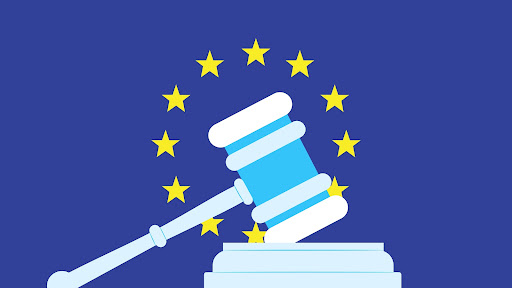The popularity of cryptocurrencies has surged in recent years, leading to a greater need for payment solutions that can keep up with the ever-changing digital economy. As the adoption of digital assets continues to grow, regulators worldwide are working tirelessly to create legal frameworks that ensure the safe and secure use of these novel financial instruments.
One such regulatory effort in Europe is the Markets in Crypto-Assets (MiCA) regulation, proposed by the European Commission. This framework is intended to provide consumer protection and maintain financial stability.
What is MiCA, and Why Is It Needed?
MiCA was proposed by the European Commission to fill the regulatory gap in the crypto asset market. MiCA proposes to provide a comprehensive and coordinated legal framework for issuing, trading, and providing services related to crypto-assets affecting businesses such as crypto payment solutions. The framework addresses the diverse and evolving landscape of cryptocurrencies and crypto-asset services.
The primary goals are to protect consumers, and maintain financial stability, with some crypto figureheads claiming it will foster innovation. It seeks to achieve these objectives by setting clear rules and standards for issuing and trading crypto assets and related services.
Scope of MiCA and the Crypto Assets It Covers
MiCA will cover all crypto assets presently unregulated by financial services regulations, including:
- Utility Tokens
- Asset-Referenced Tokens
- E-Money tokens
- Certain Stablecoins
It covers both existing and future assets that meet the regulatory definitions. MiCA does not apply to certain crypto assets, such as those already covered by other European regulations, like securities and assets classified as electronic money under the E-Money Directive.
Stablecoins and Their Treatment Under MiCA
Stablecoins are a type of crypto asset designed to maintain a stable value by pegging them to underlying assets or reference values. MiCA differentiates between asset-referenced tokens and e-money tokens, both of which can be considered stablecoins.
MiCA imposes specific obligations on issuers of stablecoins, such as enhanced capital and disclosure requirements, to ensure financial stability and consumer protection.
Crypto Asset Services Regulated by MiCA
MiCA regulates a wide range of crypto asset services, most of which have strong similarities to investment services and activities under MiFID II. Per the MiCA framework, crypto firms like Swapin, wishing to engage in any specified crypto-asset services and activities, have to obtain prior authorisation from the relevant regulator. These crypto asset services include but are not limited to:
- Custody & Administration: Safekeeping crypto-assets or private keys.
- Trading Platform Operation: Managing a system for third-party crypto-asset transactions.
- Exchanging Crypto for Funds: Trading crypto-assets for fiat money using proprietary capital.
- Exchanging Crypto for Crypto: Trading crypto-assets for other crypto-assets using proprietary capital.
- Order Execution: Concluding agreements to buy or sell crypto-assets for third parties.
- Crypto-Asset Placing: Marketing crypto-assets on behalf of offerors or related parties.
- Transfer Services: Transferring crypto-assets between addresses/accounts.
Compliance Requirements for Crypto Asset Service Providers
MiCA introduces a “Mini-MiFID” regime, which incorporates requirements similar to the MiFID II framework for traditional financial services. This new set of rules aims to ensure a consistent and secure environment for crypto asset service providers while addressing various aspects of their operations. The primary areas covered under the MiCA compliance requirements include:
- Capital Requirements: Providers must maintain adequate capital and liquidity.
- Governance: Establish robust governance structures, risk management, and internal controls.
- Investor Protection: Ensure transparent and fair practices, proper handling of customer assets, and effective complaint procedures.
- Transparency: Disclose accurate information on services, fees, and conflicts of interest, and provide regular reports to regulators.
- AML and CTF Measures: Implement thorough customer due diligence, transaction monitoring, and report suspicious activities.
By adhering to these compliance requirements, crypto asset service providers who follow these regulations can create a secure and trustworthy environment for their customers and the broader market.
Issuers of Crypto Assets and Their Obligations
All crypto asset issuers must comply with MiCA’s requirements, including registering with a competent authority, providing a detailed whitepaper, and adhering to marketing and disclosure rules. Issuers of stablecoins and e-money tokens face additional obligations, such as maintaining a reserve of assets, ensuring operational resilience, and meeting capital requirements.
Non-EU firms and their compliance with MiCA
Non-EU firms offering tokens to European investors must comply with MiCA by establishing a branch in the EU or through equivalence arrangements. These arrangements allow firms to operate under their home country’s regulatory framework, provided it is deemed equivalent to MiCA.
As a European firm, Swapin is directly subject to MiCA regulations. However, non-European companies operating in the EU crypto market or offering services to European customers must also closely monitor MiCA’s developments to ensure compliance with the new regulatory framework. This may involve adjusting their business practices and updating internal policies per MiCA requirements.
UK and MiCA: A Post-Brexit Regulatory Landscape
Following Brexit, the UK is no longer subject to EU regulations, including the upcoming MiCA framework. However, the UK has already shown a keen interest in developing its regulatory approach to crypto-assets, as evidenced by its ongoing efforts to implement the EU’s Fifth Anti-Money Laundering Directive (5AMLD) domestically. The UK’s Financial Conduct Authority (FCA) oversees and regulates the country’s crypto-asset industry.
Although the UK is not legally required to adopt MiCA, the EU’s approach is likely to impact its domestic regulations. Given that the UK is a prominent global financial centre, it must keep its regulations in line with its European counterparts to maintain its status and facilitate cross-border commerce. Therefore, the UK may create a regulatory system for crypto-assets that closely aligns with MiCA, ensuring that firms based in the UK can still access the EU market without much difficulty.
Timeline and Transitional Period of MiCA
MiCA is expected to be fully implemented within two years, providing firms with a clear timeline to prepare for the new regulatory environment. This implementation period will include a transitional phase, during which affected firms can familiarise themselves with the new requirements and adjust their business practices accordingly. The transitional period aims to ensure a smooth integration of MiCA’s regulatory framework into existing operations, minimising potential disruptions to the market.
Impact of MiCA on the European and global crypto landscape
The introduction of MiCA is set to impact the European and global crypto landscape significantly. By providing clear rules and standards for crypto-asset service providers, MiCA has the potential to boost consumer confidence and attract increased institutional investment in the European crypto market. This regulatory certainty will create a more secure and transparent environment, fostering innovation and growth within the industry.
Additionally, MiCA, as a comprehensive regulatory framework, could set a precedent for other jurisdictions worldwide. Its adoption may encourage similar legislation in other countries, potentially leading to a globally consistent and unified regulatory environment for crypto-assets. This would greatly benefit companies like Swapin, as it would simplify the process of navigating multiple regulatory systems and provide easier access to international markets.
Bottom Line
MiCA sets clear rules and standards for issuers, service providers, and non-EU firms, creating a consistent and secure environment for the crypto industry. This regulatory certainty bolsters consumer confidence, draws institutional investment, and encourages the development of globally consistent crypto-asset regulations.
For businesses like Swapin, which is already regulated and proactive in staying ahead of regulation, understanding the scope and implications of MiCA is crucial for navigating the changing regulatory landscape. Crypto companies must comply with MiCA regulations to succeed in the global market and ensure the continued growth of the digital asset industry.





